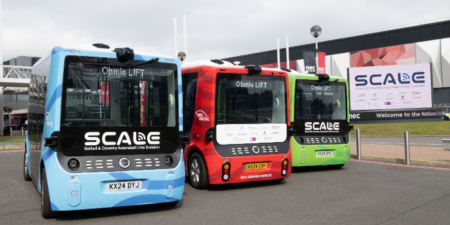Wind River, a subsidiary of Intel Corporation and a software developer for the Internet of Things (IoT), is leading a collaboration in Ohio that aims to advance safe and secure technologies for connected and autonomous vehicles (CAVs).
Wind River is partnering with the Transportation Research Center (TRC), Ohio State University (OSU), and the City of Dublin, Ohio, to develop strategies and technologies that safely and securely increase the pace, quality, development, testing and deployment of self-driving and other connected vehicle technologies.
The group is planning to test emerging technologies to discover how a symbiotic relationship between vehicles and infrastructure can improve the lives of community residents. In addition to the self-driving cars themselves, the group plans to test technologies such as vehicle-to-vehicle (V2V) and vehicle-to-infrastructure (V2I) communication, connected vehicle cockpit software, smart sensing and mapping, and associated data collection. With OSU students, researchers, and faculty to play a key role, the collaboration is also intended to develop the next generation of automotive experts.
The key objective for the project’s initial phase includes the joint development and testing of autonomous vehicles or ‘rolling laboratories’, with each of the partners providing different roles within the program:
Wind River will provide its Helix Chassis portfolio of automotive products, including a cloud-based connectivity platform and autonomous driving systems;
TRC is the largest independent proving ground and vehicle testing organization in the USA, and is home to the National Highway Traffic Safety Administration’s (NHTSA) Vehicle Research and Test Center, with 4,500 acres of road courses and a 7.5-mile (12km) high-speed oval;
Dublin is one of the end points for the US 33 Smart Corridor, 35 miles (56km) of highway where the Ohio Department of Transportation (ODOT) is equipping high-capacity fiber-optic cable to link researchers with data from sensors along the road;
The OSU’s Center for Automotive Research (CAR) will provide hands-on support using its experience in CAV research, and the faculty and students will be instrumental in the algorithm development and integration of the collaboration’s test vehicles.
“The Central Ohio region is an emerging hub for smart city and smart vehicle technologies, and our unique ensemble approach can set a standard for how communities can innovate mobility and use learnings to impact vehicle development and deployment best practices,” said Marques McCammon, general manager of connected vehicle solutions at Wind River. “To realize autonomous driving for the masses, a variety of players must come together with an aligned understanding.”




